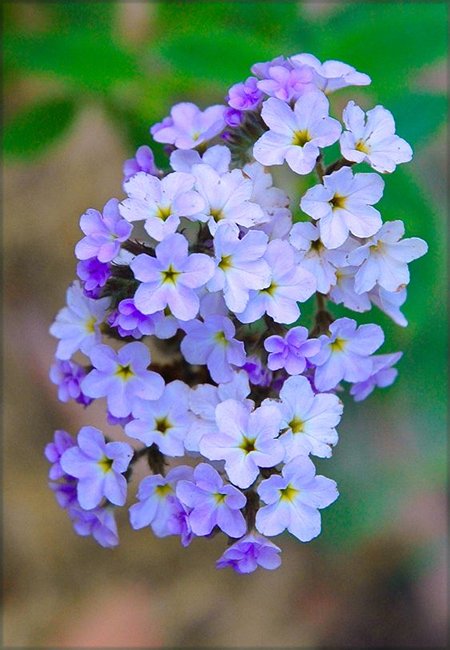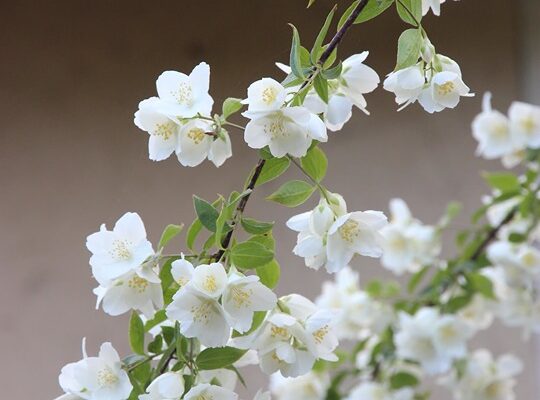15 Visionary Fragrant Flowers for Home
Your favorite flowers likely have a scent, although non-fragrant blooms such as sunflowers, dahlias, tulips, and calla lilies are just as attractive. The reason is that fragrance powerfully and vividly triggers emotions and memories, making the soothing fragrant flowers stand out in our minds. If you want to experience your preferred floral fragrance regularly, planting shrubs, bushes, or trees of these blooms in your garden is the best way to do so.
Fortunately, there are various options for soothing fragrant flowers regardless of their size, shape, or type. They range from tropical tree blooms to tiny, compact blossoms that hug the ground. Some flowers are both showy and fragrant, while others may not look like much at first glance but surprise you with their scent. Interestingly, some flowers release their sweet fragrance throughout the day, while others only do so at night. Additionally, some blooms persist for months, while others last only a few hours.
The reason for this abundance of fragrance is that flowers produce scents to attract pollinators, which is essential for the continuation of the plant’s life cycle. Pollinators are also critical for maintaining a thriving garden. Therefore, if you want to take your garden to the next level, it is essential to include fragrant bloomers that attract these little critters.

1. Paperwhites
Paperwhites are a type of daffodil in the Narcissus genus, native to the Mediterranean region. The paperwhite flower is known for its delicate white blooms and sweet fragrance, which make it a popular choice for indoor floral arrangements and holiday decorations. Paperwhites typically bloom in the winter and early spring, adding a touch of brightness and cheer to the darker months of the year. They are relatively easy to grow, requiring only a shallow container, water, and sunlight. However, they can be somewhat sensitive to temperature changes and excessive watering, so care should be taken to provide them with the right conditions. In addition to their ornamental value, paperwhite flowers have been used in traditional medicine to treat a range of ailments, including digestive and respiratory problems. They are also used in aromatherapy for their calming and uplifting effects. Overall, the paperwhite flower is a lovely and delicate plant that brings a touch of beauty and brightness to any indoor space.
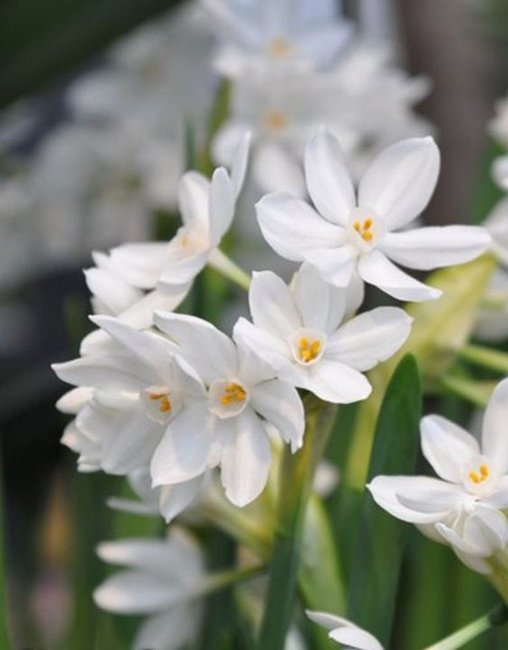
2. Mock Orange
Mock Orange, also known as Philadelphus, is a popular deciduous shrub that is native to Asia, Europe, and North America. The plant is named for its stunningly beautiful flowers that resemble those of an orange tree. The Mock Orange flower is usually white, although it can sometimes be a light pink color, and it emits a lovely fragrance that is reminiscent of orange blossoms. The blooms appear in late spring to early summer and are comprised of multiple petals that are arranged in a cup shape. The shrub itself can grow to be quite tall and bushy, reaching heights of up to 10 feet and widths of up to 8 feet. Mock Orange is an easy-to-grow plant that is relatively low-maintenance, making it a popular choice among gardeners. It is also known for its versatility, as it can be used as a standalone shrub or as part of a larger landscape design. Overall, the Mock Orange flower is a lovely and fragrant addition to any garden or landscape.
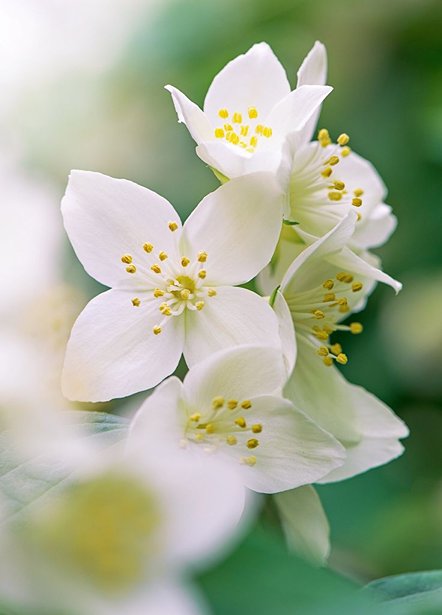
3. Stock
Stock flower, also known as Matthiola incana, is a highly fragrant and attractive flowering plant that is native to the Mediterranean region. The plant produces tall spikes of delicate, multi-layered flowers in a wide range of colors, including white, pink, lavender, and deep purple. The flowers have a sweet and spicy fragrance that is highly appealing, and they are commonly used in perfumes, soaps, and candles. Stock flowers are also popular in floral arrangements, adding a touch of elegance and sophistication to any occasion. In addition to their ornamental value, stock flowers are also known for their medicinal properties. The plant contains compounds that have been shown to have antifungal, antibacterial, and anti-inflammatory properties, making it useful in treating a variety of health issues. Stock flowers are also a popular choice for companion planting, as they attract beneficial insects such as bees and butterflies, while repelling pests. Overall, stock flower is a versatile and highly valued plant that brings both beauty and practicality to gardens, homes, and commercial settings.

4. Frangipani
Frangipani flower, also known as Plumeria, is a stunningly beautiful tropical plant that produces an array of colorful and fragrant flowers. Native to Central and South America, Frangipani has become a popular ornamental plant across the world due to its captivating beauty and exotic scent. The flowers have a unique shape, with five petals that form a delicate spiral, and come in a wide range of colors including white, yellow, pink, and red. The scent of the flowers is intoxicating, and is often used in perfumes and cosmetics. In addition to its ornamental value, Frangipani is also revered for its medicinal properties. Its bark, leaves, and sap are believed to have antiseptic, analgesic, and anti-inflammatory properties, and are used to treat a variety of ailments such as skin infections, rheumatism, and fever. Frangipani is also an important cultural symbol in many countries, representing love, beauty, and the cycle of life. Overall, Frangipani flower is a truly remarkable plant that combines beauty, fragrance, and healing properties, making it a cherished addition to gardens, parks, and homes around the world.
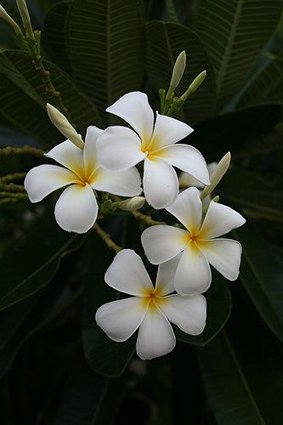
5. Butterfly Ginger Lily
Butterfly ginger lily, also known as Hedychium coronarium, is a stunningly beautiful and fragrant perennial plant that belongs to the ginger family. Native to Southeast Asia, this plant is widely grown for its large, showy flowers that bloom from midsummer to early autumn. The flowers are white with a yellow center and have a distinct, sweet fragrance that attracts butterflies and bees. The plant can grow up to six feet tall and has long, lance-shaped leaves that are deep green in color. It prefers moist, well-drained soil and partial shade, making it an excellent choice for gardens or as a container plant. In addition to its ornamental value, butterfly ginger lily is also used for medicinal purposes in traditional medicine. The rhizomes and leaves of the plant are believed to have anti-inflammatory, antipyretic, and analgesic properties, and are used to treat a variety of ailments such as headaches, fever, and arthritis. Overall, butterfly ginger lily is a stunningly beautiful and versatile plant that adds both beauty and practicality to any garden.
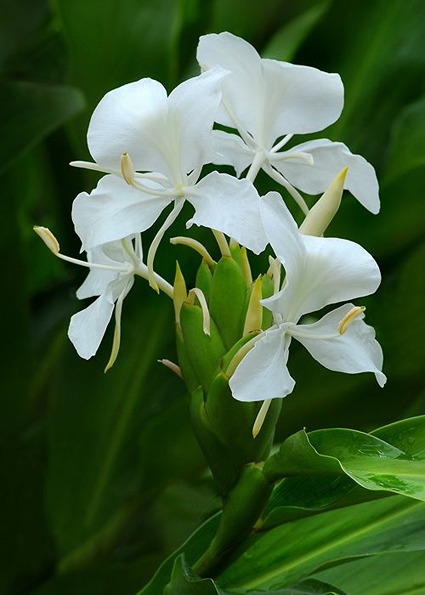
6. Night Blooming Jasmine
Night Blooming Jasmine, also known as Cestrum Nocturnum, is a tropical shrub that is native to South America, but can now be found throughout the world in warm climates. As its name suggests, this plant blooms at night. Release an intoxicating fragrance that is often described as a blend of honey, citrus, and gardenia. The small, tubular flowers are white or pale green in color and grow in clusters along the branches of the shrub. The leaves are deep green and glossy, and the plant can grow up to 10 feet tall and wide. Night Blooming Jasmine is often grown as an ornamental plant, as it is prized for its beauty and fragrance. Despite its beauty, it is worth noting that Night Blooming Jasmine is toxic if ingested, so care should be taken when planting it around pets or small children. Overall, Night Blooming Jasmine is a stunning and fragrant plant that can add a touch of magic to any garden or landscape, especially when enjoyed during a warm summer night.
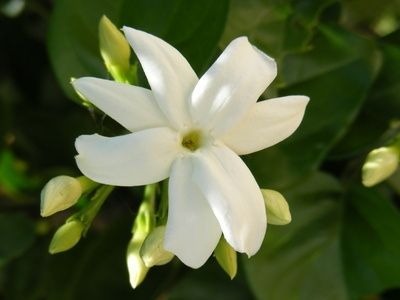
7. Tuberose
Tuberose is a flowering plant native to Central America, known for its fragrant and exotic blooms. The tuberose flower features long, slender white or pinkish petals that bloom in clusters atop a tall stem. The fragrance of the tuberose flower is intensely sweet and floral, often described as intoxicating. Tuberose is a popular choice for perfume makers and is used in many high-end fragrances due to its rich scent. Tuberose plants require well-drained soil and full sunlight to thrive, and they typically bloom in the summer months. In addition to their ornamental value, Tuberose is also associated with a range of symbolic meanings, including love, and luxury. Overall, the tuberose flower is a stunning and exotic plant that adds beauty, fragrance, and a touch of romance to any garden or floral arrangement.
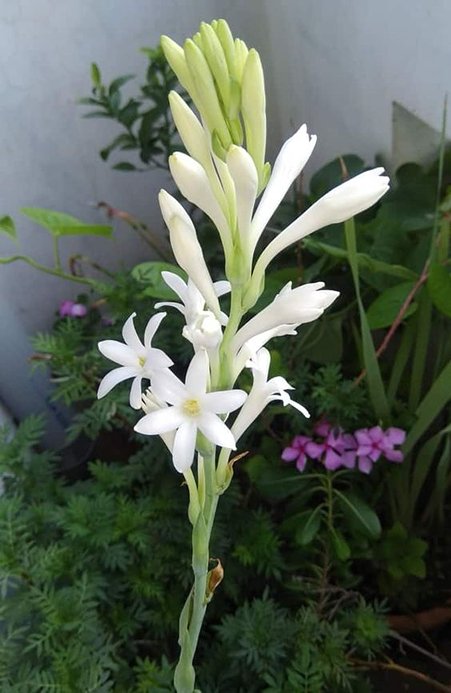
8. Freesia
Freesia is a flowering plant genus in the family Iridaceae, native to southern Africa. The freesia flower is known for its fragrant and colorful blooms, which come in a range of colors, including white, yellow, pink, red, and purple. Freesias are a popular choice for floral arrangements, as their delicate and elegant appearance adds charm and beauty to any bouquet. They are also a popular choice for wedding flowers, symbolizing trust, innocence, and friendship. Freesia plants typically bloom in the spring and early summer, and they require well-drained soil and full sunlight to thrive. They are relatively low maintenance and can be grown in pots or as part of a garden bed. In summary, the freesia flower is a beautiful and fragrant plant that adds elegance and charm to any floral arrangement or garden.
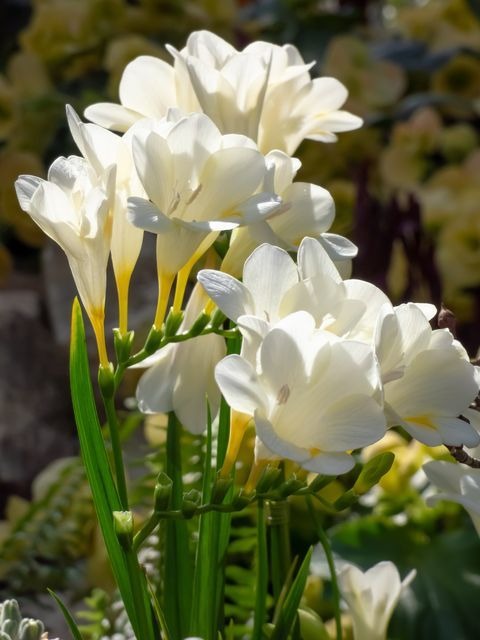
9. Lilac
Lilac is a flowering plant genus in the family Oleaceae, native to Europe and Asia. The lilac flower is known for its beauty, fragrance, and romantic associations. Lilac flowers come in a range of colors, including purple, pink, white, and blue, and their sweet and heady scent is one of their most distinctive features. Lilacs are often used in floral arrangements, as they add a touch of elegance and nostalgia to any bouquet. They are also a popular choice for wedding flowers, symbolizing love and romance. In addition to their ornamental value, lilac flowers have been used in traditional medicine to treat a variety of ailments, including fever and headaches. Lilac plants require well-drained soil and full sunlight to thrive, and they typically bloom in the late spring and early summer. They are relatively low maintenance and can be grown as shrubs or small trees. Lilac flowers are also popular for their symbolic meanings, including the first emotions of love and the joy of youth. In summary, the lilac flower is a beloved and cherished plant that is renowned for its beauty, fragrance, and romantic associations.
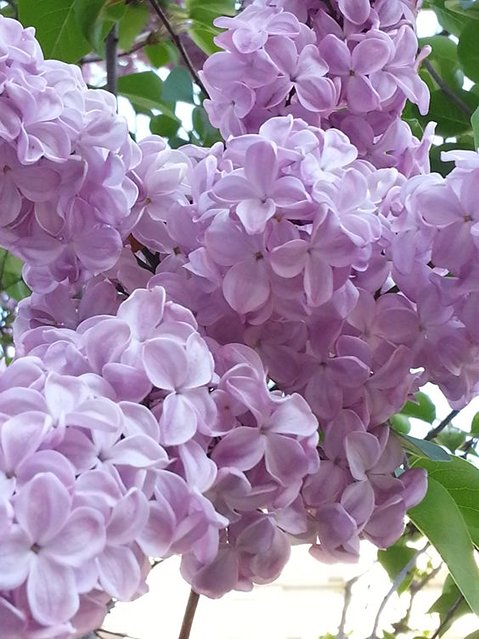
10. Angel's Trumpet
Angel’s trumpet is a flowering plant genus in the family Solanaceae, native to South America. The angel’s trumpet flower is known for its large, trumpet-shaped blooms that hang downward from the plant’s branches. The flowers come in a range of colors, including white, pink, yellow, and peach, and their fragrant scent is most potent at night. Angel’s trumpet flowers are often used in ornamental gardening, as they add a touch of elegance and exoticism to any garden. The plant itself can grow up to 6 meters tall, with leaves that can be up to 50 centimeters long, making it an impressive and imposing sight in any garden. However, it’s important to note that all parts of the angel’s trumpet plant are toxic if ingested and even handling the plant can cause skin irritation in some people. Despite its toxic properties, the angel’s trumpet plant has been used in traditional medicine to treat a range of ailments, including asthma and arthritis. It’s also been used in shamanic and spiritual practices for its psychoactive properties. Overall, the angel’s trumpet flower is a stunning and unique plant that adds beauty and intrigue to any garden, but it should be handled with caution due to its toxic properties.
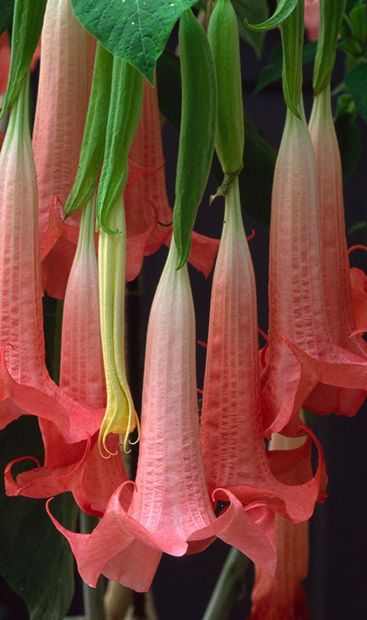
11. Daphne
Daphne is a flowering plant genus in the family Thymelaeaceae, native to Europe, Asia, and Africa. The daphne flower is known for its beauty, fragrance, and delicate nature. Daphne flowers come in a range of colors, including white, pink, and purple, and their distinctive scent is often compared to that of citrus or honey. Despite their beauty, daphne flowers are not commonly used in floral arrangements due to their short stems and delicate nature. Instead, they are often grown as ornamental shrubs, prized for their fragrant flowers and attractive foliage. Daphne plants require well-drained soil, partial shade, and regular watering to thrive. They are also susceptible to pests and diseases, so proper care and attention are needed to keep them healthy. In addition to their ornamental value, daphne flowers have been used in traditional medicine to treat a variety of ailments, including skin conditions and digestive problems. However, it is important to note that many parts of the daphne plant are toxic and should not be consumed. In summary, the daphne flower is a beautiful and fragrant plant that adds elegance and charm to any garden.
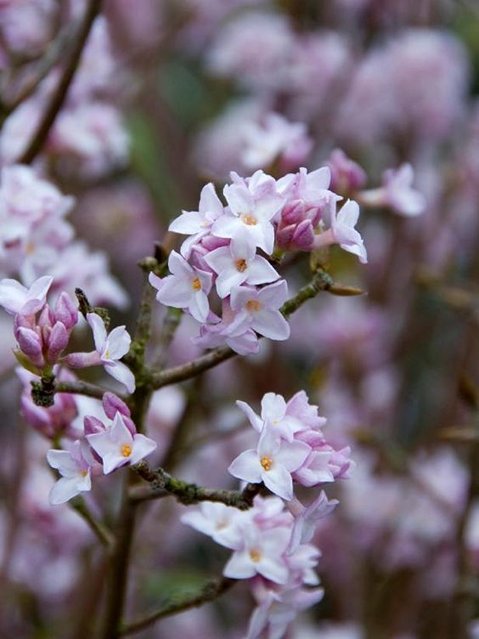
12. Sweet Pea
Sweet pea is a flowering plant genus in the family Fabaceae, native to southern Italy and Sicily. The sweet pea flower is known for its fragrant, delicate and colorful blooms. Its scientific name, Lathyrus odoratus, means “fragrant pea” and it is an apt description of the flower’s sweet and heady scent. Sweet pea flowers come in a wide range of colors, including pink, purple, red, white, and yellow and they are often used in floral arrangements and as garden plants. Sweet peas are climbers and can reach heights of up to 2 meters, making them an ideal choice for trellises and arches. Sweet pea flowers are also popular for their symbolic meanings, including joy, gratitude, and farewell. They are a popular choice for bridal bouquets and are often given as gifts to mark special occasions. Sweet peas require a lot of sunlight, well-drained soil, and regular watering to thrive. They are also susceptible to pests and diseases, so proper care and attention are needed to keep them healthy. In summary, sweet pea flowers are beautiful, fragrant and versatile plants that add color and charm to any garden or floral arrangement.
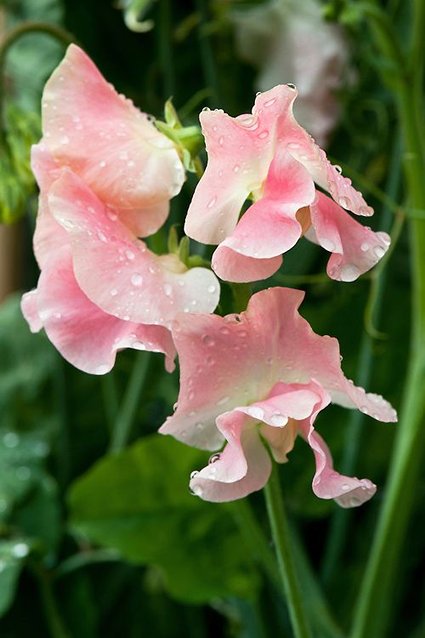
13. Gardenia
Gardenia is a flowering plant genus in the family Rubiaceae, native to tropical and subtropical regions of Africa, southern Asia, Australasia and Oceania. The gardenia flower is known for its stunning beauty and sweet fragrance. It is a popular ornamental plant grown for its attractive foliage and showy, white, creamy or yellowish flowers. The gardenia flower has a distinctively sweet scent that is often used in perfumes, aromatherapy, and as a natural air freshener. The gardenia’s large, white, velvety petals give it a sophisticated and elegant look that is often used in wedding bouquets and other special events. The plant has glossy, dark green leaves that are leathery to the touch and remain evergreen in warmer climates. Gardenia plants prefer acidic soil and a warm, humid climate. They require adequate watering and fertilization to thrive and bloom. In traditional medicine, gardenia flowers are used to treat inflammation, infections, and skin disorders. Overall, the gardenia flower is a beloved and cherished plant that is renowned for its beauty and fragrance.
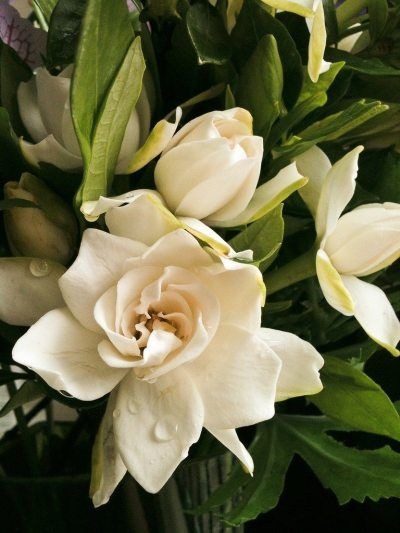
14. Rose
The rose flower is undoubtedly one of the most beloved and recognizable flowers in the world. With over 150 species and thousands of cultivars, roses come in an incredible range of colors, shapes, and sizes, and have been prized for their beauty and fragrance for centuries. Roses are commonly used in gardens, as cut flowers, and for a variety of ornamental purposes. They have also been used in perfumes, cosmetics, and medicinal products. Rose plants can be grown in a variety of conditions, from sunny, dry climates to humid, cool regions, making them a versatile and adaptable plant. Additionally, roses have a rich cultural significance and have been associated with love, passion, and beauty in many cultures. In fact, the rose has been considered a symbol of love and romance since ancient times, making it a popular flower for weddings, anniversaries, and other romantic occasions. Overall, the rose flower is a beautiful, versatile, and culturally significant plant that continues to capture our hearts and imagination.

15. Heliotrope
Heliotrope flowers, also known as cherry pie plants or turnsole, are a soothing fragrant flowering, plant that produces a sweet, vanilla-like scent that has made it popular in gardens for centuries. The small, soothing fragrant flowers come in shades of purple, blue, and white, and are clustered together to create beautiful, bushy blooms that attract a wide range of pollinators such as bees, butterflies, and hummingbirds. Heliotropes prefer warm, sunny locations and well-draining soil, making them ideal for planting in borders, window boxes, or containers. These plants are generally low maintenance and require minimal care, making them a popular choice for beginner gardeners. Heliotropes are also versatile plants, as they can be grown as annuals or perennials, depending on the location and climate. In addition to their beauty and fragrance, the heliotrope flower has been used for medicinal purposes for centuries, with extracts from the plant being used to treat ailments such as coughs, and digestive issues. Overall, the heliotrope flower is a beautiful, soothing fragrant plant that can add color and fragrance to any garden, while also providing a range of medicinal benefits.
